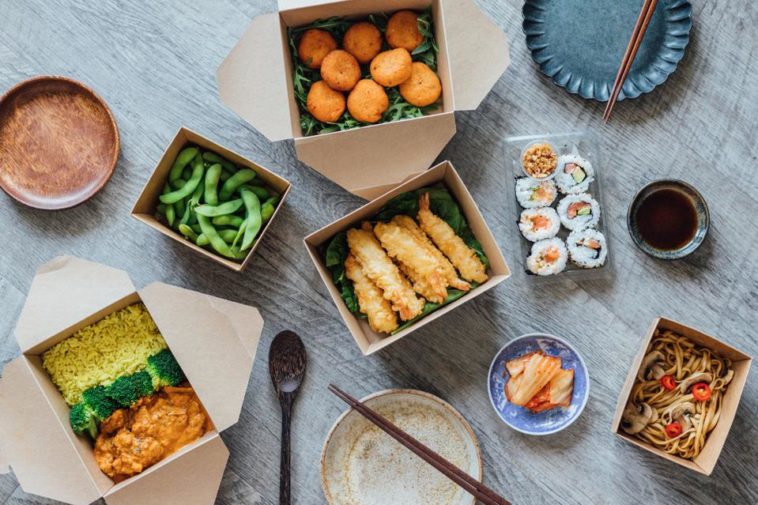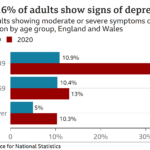3 Lasting Changes To Grocery Shopping After COVID-19 – Forbes
- Share to Facebook
- Share to Twitter
- Share to Linkedin

getty
Grocery stores have long been a staple of the global economy. But it wasn’t until the COVID-19 pandemic that most people realized just how vital they are. As lines of shoppers wrapped around stores and toilet paper were nearly possible to come by, grocery stores were forced into the spotlight. Stores quickly pivoted to provide shopping experiences that were safe and useful in hopes of getting shoppers the items they needed in the safest way possible.
Grocery’s big moment has given the industry momentum. How stores leverage that momentum will be telling. These three lasting changes will forever impact how consumers get their food.
1 . Online Ordering
Far and away, the biggest change to grocery has been the boom in online ordering. Many stores were already building out their order pickup and delivery capabilities, but the services have exploded during the pandemic. A year ago, 81% of consumers had never bought groceries online, but during the pandemic nearly 79% of shoppers have ordered online. In August 2019, U.S. online grocery sales totaled $1.2 billion; in June 2020, that total was $7.2 billion. Over that same time period, the number of online customers increased from 16.1 million to 45.6 million and the average spend per order grew from $72 to $84.
To handle the surge of orders, largely for curbside pickup, stores have made drastic changes, including dedicating sections of their parking lots for order pickup and converting some stores to dark stores that are strictly for fulfilling online orders and don’t allow customers inside.
Online ordering is also changing what customers buy and creating a more personalized experience. Instead of unrelated items placed far apart in a physical store, retailers and food brands can connect items in the ordering app. If a customer searches for steak, they might also get a recommendation for chimichurri sauce. A push towards personalization and recommendations, paired with powerful AI algorithms, has not only increased how well grocery stores and delivery services know their customers, but also increased targeted marketing. Algorithms make for a better online ordering experience as stores understand customers’ buying patterns and can recommend items or alert a customer if they forgot something they frequently purchase.
Life & Work 6 Months From Now – What Will & Won’t Stick
Marketing And Branding In The Web’s Red Light District
Digital Marketing As Bad As The Dallas Football Team
2 . Larger Orders, Shelf-Stable Food
It’s not just how customers get their groceries that has changed—it’s also what they are buying. With restaurants closed and people staying at home, more shoppers are trying their hand at cooking, which has caused people to buy more items. That’s paired with people stocking up during the uncertainty of the pandemic. In March 2020, the average American household spent $525 on groceries, up 30% from March 2019. Things settled down to $455 per household in July 2020, which is still 10% more than spending in July 2019.
Shoppers are visiting the store less often, but spending more when they do. And when they do go to stores, they’re buying things that can last longer. While some people have used the pandemic as a way to start eating healthier, most people have bulked up on comfort foods that are cheap and shelf-stable. The reasons are two-fold: after the run on grocery stores in March, non-perishable goods give consumers peace of mind that they have food for another emergency, and just like the name implies, comfort food gives people a sense of comfort during chaotic times.
3 . Focus On Speed, Convenience And Safety
Instead of strolling the aisles to choose their groceries, shoppers are now focused on getting in and out as quickly and conveniently as possible. Over the last six months, consumers have decreased the amount of time they spend in stores. Most shoppers have trusted items they purchase regularly and are less likely to browse the store to look for a new ingredient or menu inspiration. To match the changing trends, many grocery stores are focused mainly on restocking their best-selling shelf-stable items instead of branching out with new brands and products.
Stores are also changing their internal organization and design to create experiences that facilitate faster shopping trips. End caps, which used to hold new items to catch shoppers’ attention, are now filled with everyday essentials for easy access. Shoppers come into the store with purpose and prepared shopping lists.
For checkout, more shoppers are choosing self-service options. Walmart has expanded its cashier-less offerings, and Amazon even recently unveiled technology that allows customers to pay with the palm of their hand. The main focus is applying technology to make the entire shopping and checkout experience faster and more convenient. Stores have the opportunity to be incredibly innovative and disrupt long-held practices for grocery shopping.
How Brands Can Adapt
The pandemic has been a huge boost for grocery stores. The challenge now becomes how they can leverage their recent surge into long-term success. Changing customers habits have necessitated innovation, and the industry is primed for big changes with new technology.
Brands need to keep their customers in mind as the heart of the company and focus on delivering products they want in the channels they want. But at the same time, they have some freedom to experiment with new ways of delivering groceries. People will always need to eat, and many people are open to new ways of grocery shopping if it meets their needs and keeps their families fed and healthy.
The world of grocery shopping will never be the same. Stores that will lead the disruption will innovate and find exciting new ways to meet customers’ needs.
Blake Morgan is a customer experience futurist, keynote speaker and the author of the bestselling book The Customer Of The Future. Sign up for her weekly newsletter here.
Published at Mon, 14 Dec 2020 22:00:00 +0000





Comments
Loading…